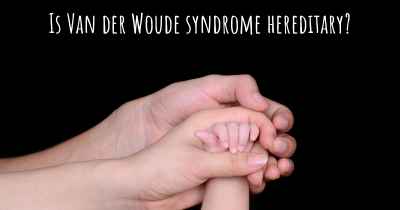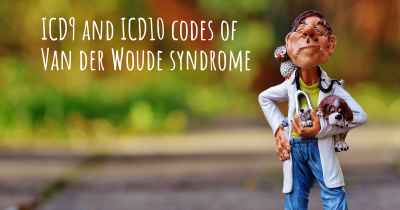What is the history of Van der Woude syndrome?
When was Van der Woude syndrome discovered? What is the story of this discovery? Was it coincidence or not?

Van der Woude syndrome is a rare genetic disorder that affects the development of the face and mouth. It was first described by Dutch physician Dr. E. van der Woude in 1954, hence the name. This syndrome is characterized by a combination of cleft lip and/or cleft palate, as well as other facial abnormalities.
The discovery of Van der Woude syndrome was a significant milestone in the field of medical genetics. Dr. van der Woude observed that the syndrome seemed to run in families, suggesting a genetic basis. He conducted extensive research and documented several cases within the Dutch population, leading to the identification of this distinct syndrome.
Over the years, further studies have shed light on the underlying genetic cause of Van der Woude syndrome. It is now known to be caused by mutations in the IRF6 gene, which plays a crucial role in facial development during embryonic growth. These mutations disrupt the normal formation of the lip and palate, resulting in the characteristic features of the syndrome.
Since its initial discovery, Van der Woude syndrome has been identified in various populations worldwide. Researchers have conducted numerous studies to understand the prevalence and clinical manifestations of the syndrome. It is estimated to occur in approximately 1 in 35,000 to 1 in 100,000 individuals, making it relatively rare.
One of the key features of Van der Woude syndrome is the high degree of variability in its presentation. While cleft lip and/or cleft palate are the most common features, individuals with the syndrome may also exhibit other facial abnormalities, such as notched or missing lower lip, pits or tags on the lower lip, or a shortened or unusually shaped philtrum (the vertical groove between the nose and upper lip).
Moreover, Van der Woude syndrome can be inherited in an autosomal dominant manner, meaning that an affected individual has a 50% chance of passing the condition on to each of their children. However, it is important to note that not all individuals with the syndrome have an affected parent, as new mutations can also occur.
Advances in genetic testing have facilitated the diagnosis of Van der Woude syndrome. Geneticists can now analyze the IRF6 gene for mutations, aiding in accurate diagnosis and genetic counseling for affected individuals and their families. Early diagnosis is crucial as it allows for timely intervention and management of the associated health issues, such as feeding difficulties and speech problems.
Treatment for Van der Woude syndrome typically involves a multidisciplinary approach, involving specialists from various fields such as plastic surgery, orthodontics, and speech therapy. Surgical repair of the cleft lip and/or palate is often performed in infancy or early childhood to improve both function and appearance. Ongoing care may be required to address any additional facial abnormalities and associated complications.
In conclusion, Van der Woude syndrome is a rare genetic disorder characterized by cleft lip and/or palate, as well as other facial abnormalities. It was first described by Dr. E. van der Woude in 1954 and is caused by mutations in the IRF6 gene. The syndrome exhibits variable clinical features and can be inherited in an autosomal dominant manner. Advances in genetic testing have improved diagnosis and allowed for better management of affected individuals. A multidisciplinary approach involving various medical specialists is essential for the comprehensive care of individuals with Van der Woude syndrome.








